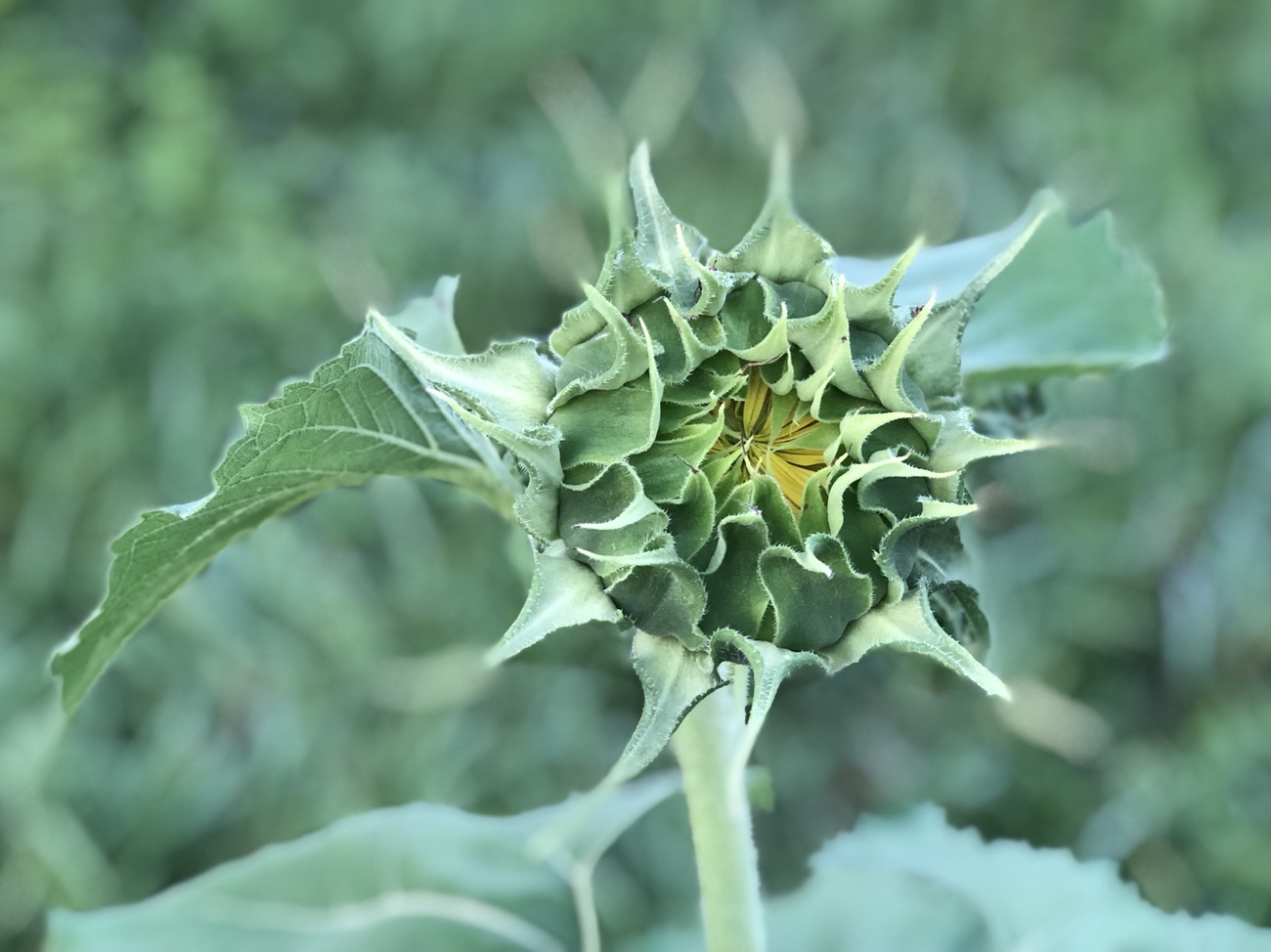
I’ve been planning a garden for the last couple of years, but have yet to actually set up the raised beds…despite having the lumber to do it. Why? It seems that other projects (interests?) always get in the way and, before I know it, it’s too late in the year to begin. Thankfully, volunteers have been allowing me to practice a bit this year!
It all started with the pig paddocks: the pigs are moved to new pasture periodically, and the ground in the newly-vacated paddock is freshly-turned and well-aerated from their hooves and sprinkled with their manure. The grass that regrew in those areas was far more lush and green than the “regular” (unfertilized) pasture. We were pleased that the pigs’ ability to utilize the pasture was also benefiting it.
One day, though, I noticed that something seemed to be growing in a former paddock. Knowing it could easily just be a robust weed or a tree seedling, I decided to take a closer look, and the plant that was growing didn’t resemble anything I’d seen growing wild out there previously. Even to a novice gardener, it had a distinctly “vegetable” look (it looked a bit like a zucchini). The leaves were wide, deep green, and low to the ground, suggesting a vining plant. I was intrigued to see how it developed.
As I investigated the plant further, I also realized that there were several similar plants in that same area – a veritable garden plot! – as well as one that I could identify: a sunflower.
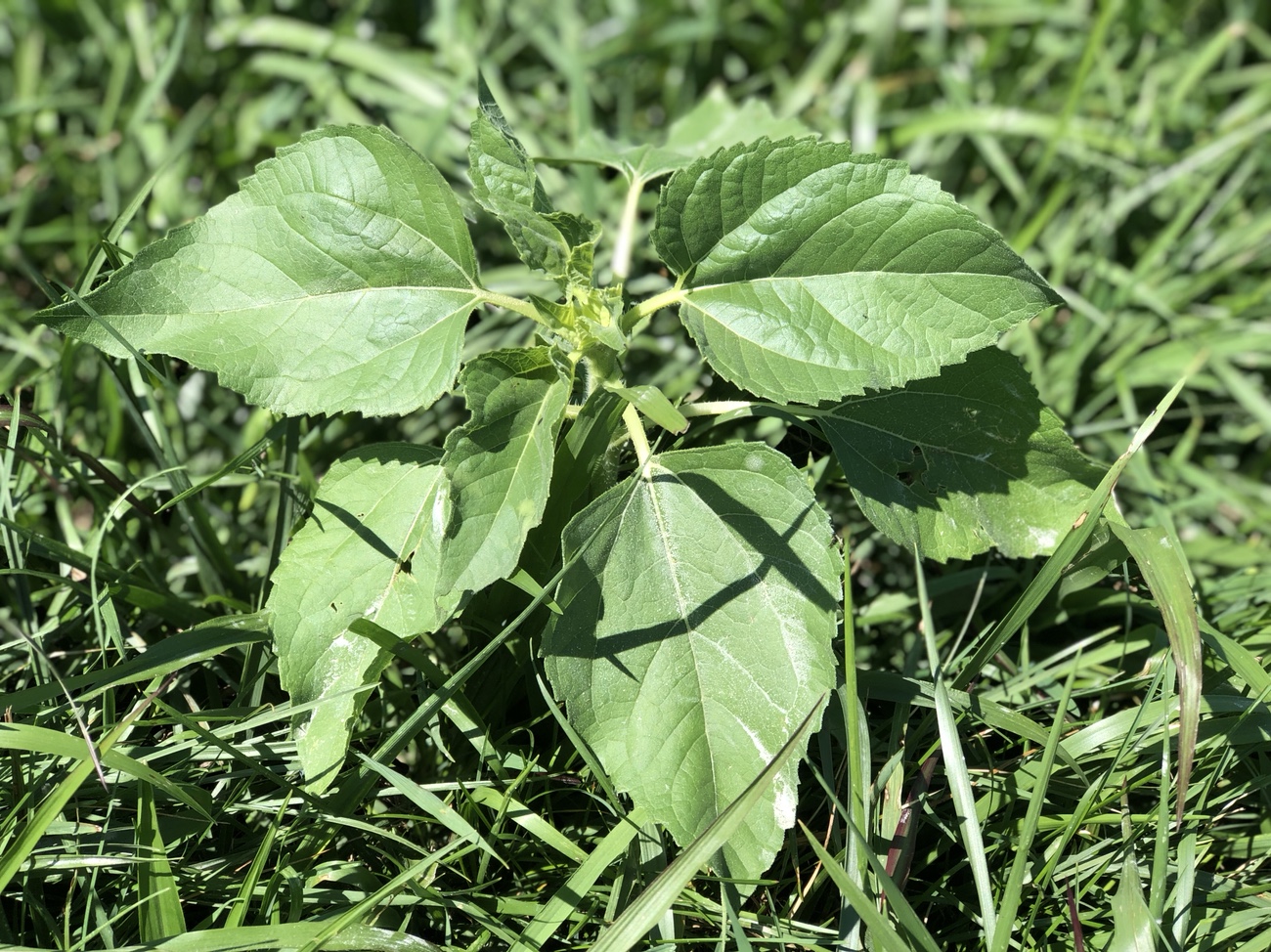
Once I saw the sunflower, I knew that the plants were likely the product of seeds that animals had missed and had germinated, since volunteer sunflower patches and oat patches have sprung up in areas where poultry weren’t meticulous about finding every seed tossed to them. Further inspection of the area pointed me to a different conclusion, though – the plants were growing in what had clearly been the “potty” area for the pigs, as they were surrounded by dried dung balls. With that information, I began trying to recall what had been fed to the pigs that could sprout into these kinds of plants.
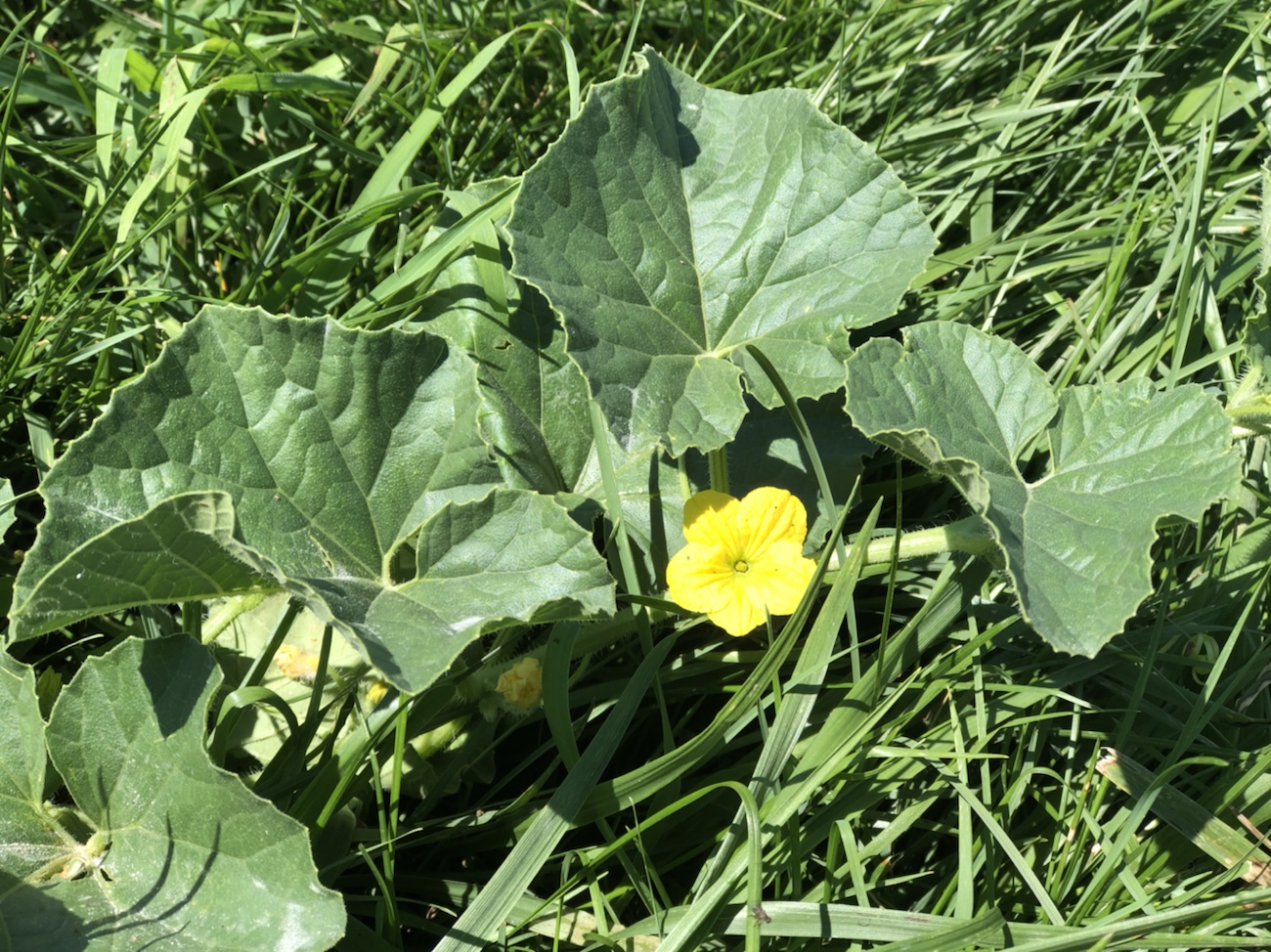
Knowing we hadn’t fed them any seeded squash during that time period, I began looking at plant photos online. When I found cantaloupe photos, it clicked: we had purchased a lovely, ripe cantaloupe at a farm store when we had picked up the Pilgrim goose quad (near the end of May), and the pigs had enjoyed the “guts” and rinds of that melon…ergo, it was likely the progeny of that cantaloupe! I can’t even begin to convey what a relief it was to solve that mystery.
I’m a big cantaloupe fan, so I decided that even though the plants seemed to be doing well without any intervention, it would be best to do some rudimentary maintenance to afford them the best chance to reach maturity and, hopefully, bear fruit. I started by researching cantaloupe care (because I’m nerdy like that) and proceeded to do some weeding (trimming grass away from the plants), mulching (using readily-available dry grass clippings from a previous mowing), and regular watering (with a repurposed plastic container that would otherwise have just gone into the recycling bin).
With some care, the plants have thrived. At least two now have yellow flowers, which should be the precursor to baby melons, and one spindly plant that was a distance away from the others is growing stronger and taller. The lone sunflower that sits in the middle of the group is also doing well, though it seems to have developed a crook in its stem, so I propped it up with a forked stick to help it straighten out. My volunteers make me feel like a gardener – granted, a newbie, but still.
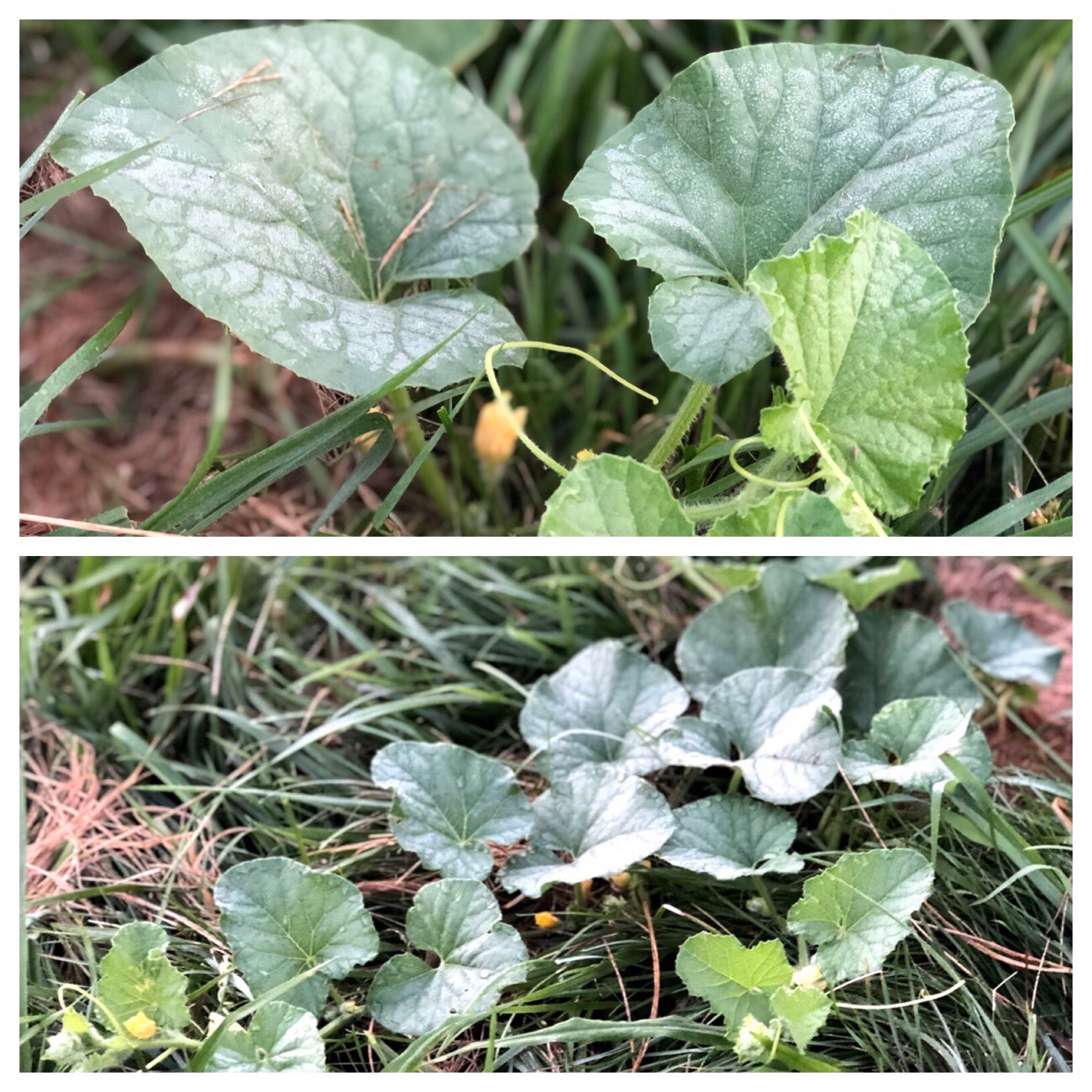
There is also a pair of sunflowers that sprouted even earlier this year in a former paddock, too. They’re tall, with very sturdy stems, and when I checked this morning, I could see yellow petals peeking through the still tightly-wrapped head – they’re ready to unfurl! If the seeds reach maturity, I’ll try to harvest and save some before the birds get to them. The poultry will also enjoy some of the volunteer seeds. To think that so many seeds could come from a single black oil sunflower seed that was either dropped or, more likely, passed whole through a pig’s digestive tract, landed in manure, and germinated…amazing.
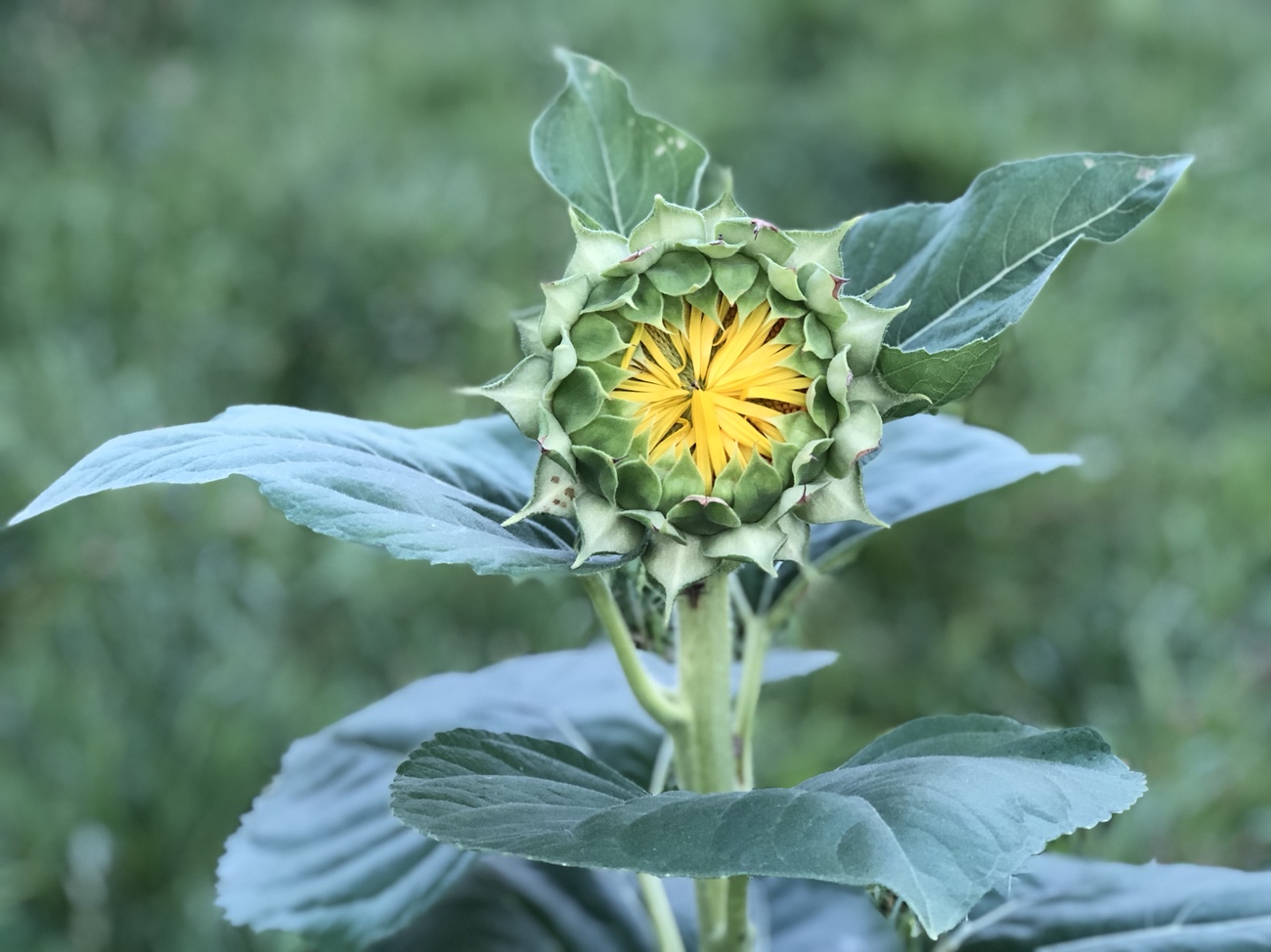
Finally, as I’ve been harvesting Queen Anne’s Lace, so plentiful in the unmowed side field, I’ve seen several Black Swallowtail caterpillars. These are the transformers: if all goes well, one day, these eye-catching striped caterpillars will metamorphose into big, beautiful butterflies. The Queen Anne’s Lace is a volunteer that is most welcome, as a useful “weed”, as a food source for creatures like butterflies and bees, and as a lovely adornment the pasture.
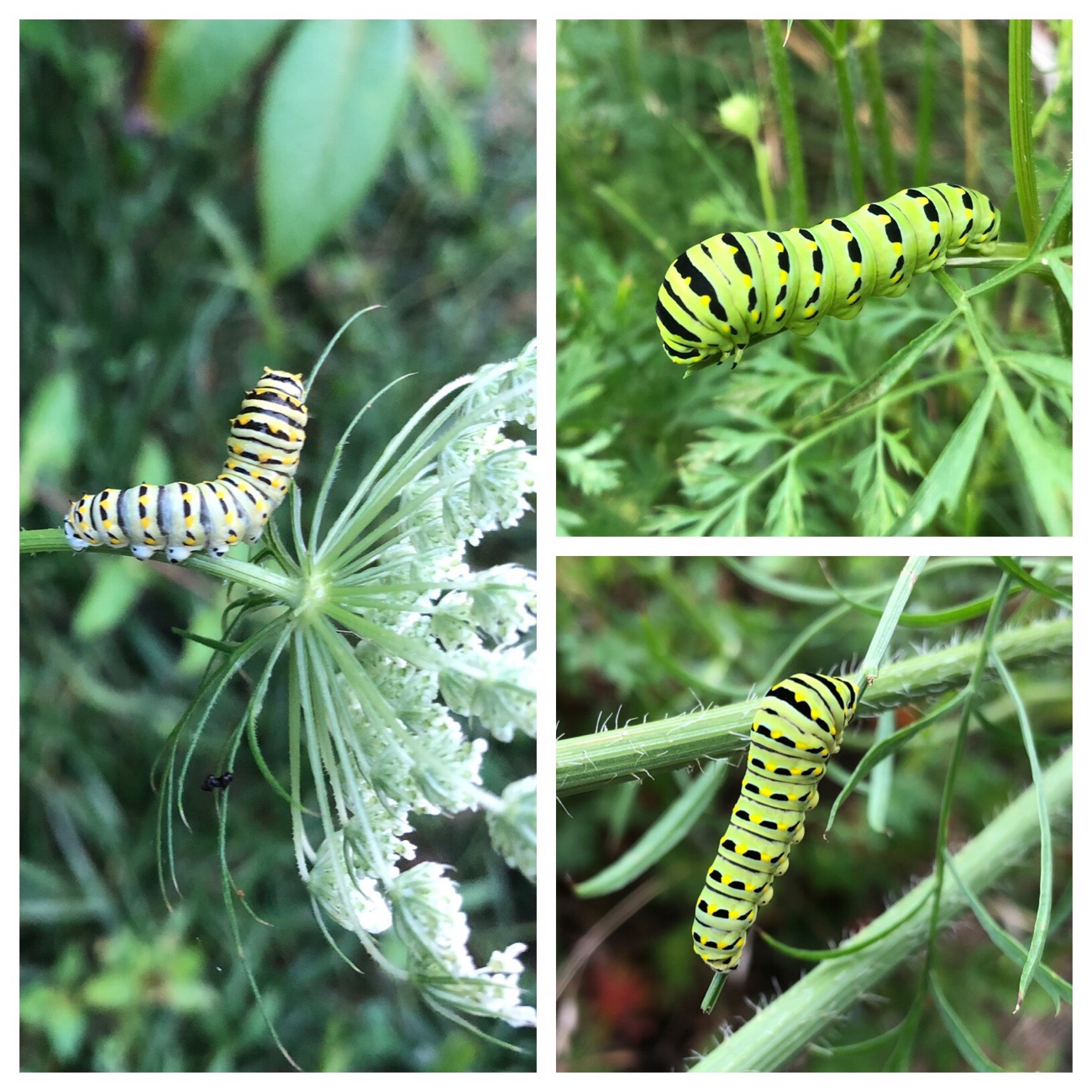
Writing this post has been a helpful exercise to help me better understand why I’m not in a hurry to create the raised garden beds: they will require maintenance and protection, unlike the bountiful, hardy, wild-growing plants. I still intend to plant some of the numerous seeds I’ve been given or have collected, and realize that when we’re enjoying our homegrown harvest, it will be immeasurably better than buying it…but I’ll keep enjoying the wild offerings while they last.

Comments are closed.